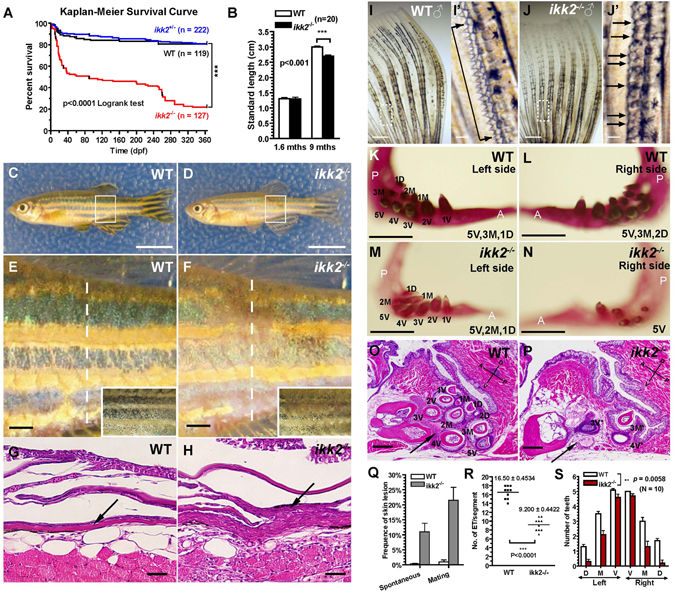Fig. 4
Ikk2 regulates development of skin and its appendages. (A) Kaplan-Meier analysis of survival of ikk2 ?/? fish during one-year period. P?<?0.001, by Logrank test. (B) Nine months-old adult ikk2 ?/? (zygotic) mutants obtained from heterozygotic parents are small. P?<?0.001, unpaired t test. (C?F) Adult ikk2 ?/? fish are hypopigmented (boxed area and inset, E,F). They succumb to skin injuries without or with mating, with an average frequency of 11% and 21.5%, respectively. Scale bar in (C,D): 1?cm; in (E,F): 1000?Ám. (Q). (E,F) blowup of white rectangle area in (C,D). In severe cases, the injuries cause skin lesion. (G,H) H&E stained cross-section at the level of skin lesion area (dashed line in C,D). Scale bar: 500?Ám. (I,J) Epidermal tubercles (ET) were reduced in ikk2 ?/?. (I?,J?) Blowup of white rectangle area in (I,J). Quantifications by unpaired t test were shown in (R) Scale bar in I,J: 500?Ám; in (I?,J?): 100?Ám. (K?N) Alizarin red staining of teeth. Scale bar: 500?Ám. (O,P) H&E stained sagittal section at the Vth branchial arch. Teeth numbers were marked by *. Note that in ikk2 ?/? fish, 4?V* was absent, 3?V* was defective, and blood supply to the dentation area (arrow) compromised. Scale bar: 100?Ám. (S) Teeth number was significantly reduced in adult mutants. P?=?0.0058, paired t test.

